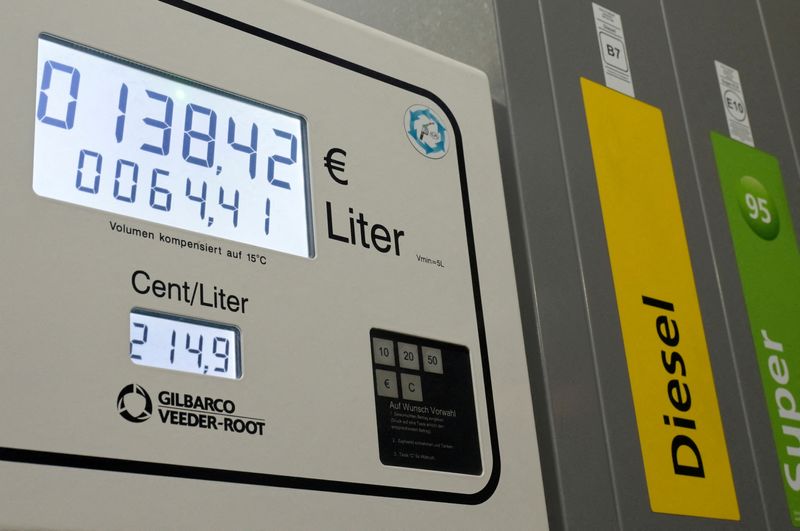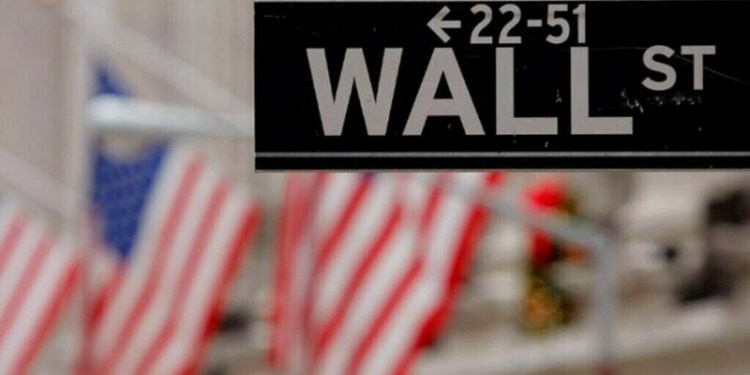2/2

© Reuters. FILE PHOTO: The display of a petrol pump is seen at a gas station after a customer has filled his car, amid Russia’s invasion of Ukraine, in Dillenburg, Germany, March 23, 2022. REUTERS/Fabian Bimmer/File Photo
2/2
By Balazs Koranyi
FRANKFURT (Reuters) -Inflation continued to surge across Europe’s biggest economies this month while growth took a hit, leaving households poorer as they picked up the bill for soaring energy costs in the wake of Russia’s shock invasion of Ukraine.
Price growth hit multi-decade highs in Italy, France, Germany and Spain in March, intensifying a policy dilemma for the European Central Bank, which needs to fight the price surge but must also avoid choking off already fading growth.
Inflation in Italy hit 7% while prices in France were up 5.1%, driven by soaring fuel and natural gas prices that typically impact poorer households more than others.
The data, along with sky-high readings from Germany and Spain a day earlier, suggest that Friday’s euro zone reading will be well above 7%, with three to four months still left before a likely peak, according to the ECB.
While most of the surge is due to energy prices, Europe’s labour market is also tighter than it has been for decades, suggesting that underlying price pressures are also starting to build and that wages will follow sooner or later.
Euro zone unemployment fell to a record low 6.8% in February, separate data showed on Thursday, and a further drop is projected by the ECB.
The conflict between Ukraine and Russia, which are both major grains producers, is also likely to push up prices of some staple foods.
“Given the rise in inflation is almost exclusively driven by the supply side, the higher inflation gets, the weaker economic growth will be,” ABN Amro analysts said in a note to clients.
“Indeed, economic growth is likely to disappoint ECB projections,” they added. “The ECB will probably balance these forces by tightening policy modestly.”
ECB Vice President Luis de Guindos acknowledged the deterioration, saying on Thursday that the economy would barely grow in the first half of 2022.
“My impression is that growth in the first quarter of this year … will be slightly positive, we’ll have very low growth,” de Guindos said. “In the second quarter of the year, my impression is that growth will be hovering (around) zero.”
RATE HIKES … OR NOT
Markets are pricing in a combined 60 basis points of hikes this year in the ECB’s deposit rate, now minus 0.50%, which would end a nearly decade long experiment with negative rates.
But market analysts are more cautious and even the most conservative policymakers are not calling for rates to move into positive territory quickly, indicating a disconnect between market pricing and the ECB’s own signals.
ECB Chief Economist Philip Lane, among the doves on the rate-setting Governing Council, even cautioned on Thursday that the war could force the ECB to ease, rather than tighten policy.
“We should also be fully prepared to appropriately revise our monetary policy settings if the energy price shock and the Russia-Ukraine war were to result in a significant deterioration in macroeconomic prospects,” Lane said in a speech, calling for readiness to either ease or tighten policy.
The caution is especially warranted as Germany, the biggest of the 19 euro zone economies, may already be skirting a recession and has started drawing up plans for rationing natural gas in case supplies from Russia are disrupted.
Others added that even if high inflation hurts the consumer and weighs on growth, it is increasingly difficult for the ECB to play it down, so talk of rates hikes are bound to intensify.
“Even though high inflation is a drag on growth, the ECB likely has some pain threshold on the inflation data as well,” JPMorgan (NYSE:JPM)’s Greg Fuzesi said.
“The bigger the upside surprises on inflation, the smaller the bar for any improving news from Ukraine to intensify a debate on the interest rate outlook.”
Source: Investing.com


























